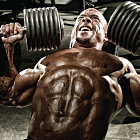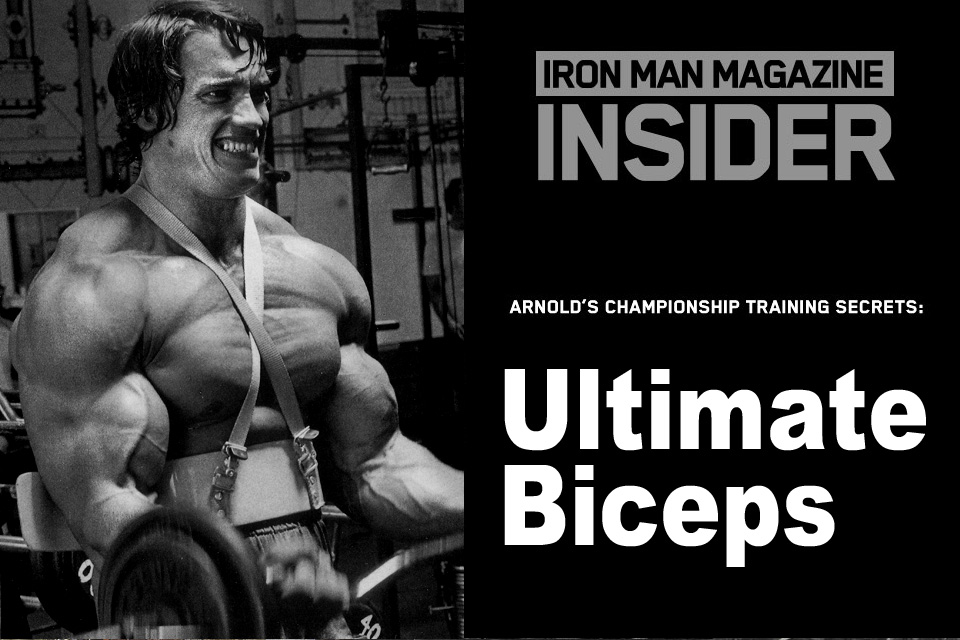 Q: I love training heavy. That’s the best way to get big, right?
Q: I love training heavy. That’s the best way to get big, right?
A: The types of muscle fibers that significantly increase in size are called fast-twitch 2A and 2B; for maximum development you need to train both types.
Lifting weights that are between 90 and 100 percent of your one-rep max produces maximum hypertrophy in the type 2B fibers. Visual proof of that theory can be found in the physiques of legendary iron athletes such as Roger Estep from powerlifting and David Rigert and Victor Sots from Olympic lifting. Those great world champions seldom did more than three consecutive reps in their training but nevertheless possessed physiques that many competitive bodybuilders would envy.
Another strength athlete with an impressive physique is British strongman Gary Taylor. He has push-pressed behind the neck 496 pounds for six reps and has full squatted 683 for three reps without knee wraps or a super suit. At 5’10” and 297 pounds Taylor has capitalized on the benefits of heavy weight training to become one of the strongest men in the world.
Even though it will make you get bigger, training with heavy weights is generally considered more conducive to increasing maximum strength. That’s because using heavy weights is more effective for improving intramuscular coordination, which is the ability of the central nervous system to recruit motor units efficiently. Not surprisingly, those who achieve impressive levels of hypertrophy with such training are blessed with extremely high numbers of type 2B fibers. In fact, muscles biopsies performed on Finnish Olympic weightlifters showed that the hypertrophy they displayed occurred mainly in the type 2B fibers.
If you prefer to use primarily low reps in your training but still want to add muscle mass, you must be aware of the following factors:
1) You need more sets to achieve sufficient growth stimulus. Because you perform less mechanical work with low-rep sets, the amount of contracting protein that is broken down is somewhat limited. The opinion of strength experts Jurgen Hartmann and Harold Tunnemann of the former East Germany is that optimal overload with low reps requires eight to 15 sets in that intensity zone. Although most of us have neither the time nor the desire to commit to so many sets per exercise, it’s possible to perform this method with fewer sets by doing modified drop sets. There’s more on that in my book Poliquin Principles.
2) It’s a longer process. Although weightlifters often display extremely well-muscled glutes, quads, traps and erector spinae, it takes them a considerable amount of time to achieve such development. Often the weightlifters you see on television have been lifting for 10 or more years and are at the peak of their athletic careers. In the beginning stages of their careers their musculature was considerably less developed. In fact, the first several years of a weightlifter’s training emphasizes technique rather than strength development.
3) Development occurs primarily in the type 2B fibers and not in the type 2As. The reason that the nervous system of an advanced weightlifter is so well developed from the emphasis on low reps and heavy weights that it can bypass the recruitment of the type 2A fibers. Although years of emphasis on training just the type 2B fibers can certainly produce remarkable muscular development, for maximum muscular development you must also use protocols that will work the type 2A fibers.
4) It’s easy to burn out with heavy, low-rep training. Millions of dollars and countless hours of research have been devoted to studying overtraining. The type of overtraining that can occur with low-rep work, according to former Soviet Union strength expert Vladimir Zatsiorsky, manifests itself in insomnia, anxiety, depression, early-morning fatigue, high blood pressure at rest and an increase in the perceived rate of effort for a given weight. It’s also possible that this type of training drains the adrenal glands, an effect that can be determined by testing the muscles that line the adrenals. I’m not saying it’s inevitable that you will overtrain using these methods but that at the elite level such training can be extremely complex.
For more on this subject and the best ways to train the 2B and 2A fibers, see my book Poliquin Principles available at Home-Gym.com.
Editor’s note: Charles Poliquin is recognized as one of the world’s most suc-cessful strength coaches, having coached Olympic med-alists in 12 different sports, including the U.S. women’s track-and-field team for the 2000 Olympics. He’s spent years researching European journals (he’s fluent in English, French and German) and speaking with other coaches and scientists in his quest to optimize training methods. For more on his books, seminars and methods, visit www.StrengthSensei.com. Also, see his ad in this issue. IM





















You must be logged in to post a comment Login